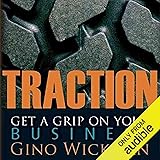Finding the cheapest way to buy gold is a common goal for many investors and collectors, especially when prices are at all-time highs, as recently highlighted. While traditional methods involve purchasing coins or bars, significant value can often be uncovered through less conventional routes, sometimes dramatically reducing the cost per gram.
As seen in the video above, unexpected places can yield genuine gold treasures. For example, a cigarette holder and a matching Zippo lighter case were discovered, demonstrating that not all gold is found in obvious forms. These types of finds often represent a more accessible entry point for those looking into buying gold without paying premium markups associated with newly minted products.
Unearthing Value: The Hunt for Affordable Gold
The pursuit of gold at reduced prices frequently involves looking in places where precious metals might be overlooked or undervalued. Instead of going directly to a bullion dealer, savvy individuals are often found searching through estate sales, flea markets, antique shops, and even pawn shops. These venues can sometimes hold incredible pieces that are not recognized for their true precious metal content.
Many people are unaware that various items, beyond standard jewelry, are crafted from gold. For instance, dental gold, old watch cases, or even decorative elements from antique furniture can be made from a significant percentage of pure gold. The excitement of treasure hunting adds an engaging dimension to the process of buying gold, making it more than just a financial transaction.
Why Look Beyond Traditional Dealers?
Purchasing newly minted gold coins or bars typically includes a premium above the current spot price of gold. This premium covers manufacturing costs, dealer markups, and sometimes even collector value if the item is rare. However, when looking for scrap gold or undervalued vintage pieces, these premiums are often significantly reduced, if not entirely absent.
On the other hand, the focus with secondhand gold is often on its “melt value,” which is simply the value of the gold itself, based on its weight and purity, without factoring in design or craftsmanship. This distinction is crucial for anyone aiming to acquire gold for the lowest possible price per gram. The cost of buying gold in this manner is frequently much lower than retail.
Identifying Gold: Beyond the Surface
When searching for inexpensive gold, knowing how to identify it accurately is paramount. The video showcases a fantastic example with 18 karat (18K) gold pieces. The “karat” system is used to measure the purity of gold, with 24K being 100% pure gold. Therefore, 18K gold indicates that 18 parts out of 24 are pure gold, or approximately 75% pure gold.
Many gold items will be stamped or hallmarked with their karat weight, such as “10K,” “14K,” “18K,” or “22K.” However, these markings can sometimes be faked or simply worn away over time. Despite this, visual inspection for characteristics like color, density, and lack of tarnish can offer initial clues. It is also common for gold to be tested with a magnet; genuine gold is not magnetic, while many gold-plated or fake items will respond to a magnet.
Common Gold Items to Seek Out
The items discovered in the video—a cigarette holder and a Zippo lighter case—illustrate that gold can be found in unexpected forms. Other common items that are often overlooked include broken jewelry, single earrings, old watch chains, and even spectacles. These pieces might not appeal to someone looking for fashionable wear, but their intrinsic gold value remains high.
Vintage gold coins, like the one found in the video, are also prime targets for those looking for affordable gold. While some coins carry numismatic value, many older gold coins are primarily valued for their gold content. Furthermore, older, heavier items like pocket watches or intricately designed lockets are often constructed with substantial amounts of gold and can be purchased for less than their melt value if the seller is unaware of their true worth.
Assessing the Value: From Scrap to Storefront
Once a potential gold item is found, its value must be accurately assessed. The 125.3 grams of 18K gold mentioned in the video, priced at $9,000, provides a clear example of the significant value these finds can hold. This valuation is typically based on the current spot price of gold, the item’s weight, and its purity.
To calculate melt value, the total weight of the item is multiplied by its gold purity percentage, and then by the current per-gram price of pure gold. However, the true sale price can vary. While an item might be bought for its melt value, it could be resold for a higher price if it possesses aesthetic appeal, historical significance, or unique craftsmanship, as was the case with the beautiful cigarette holder and Zippo lighter set. Conversely, if an item is not sold within a specified period, it is often sent “into the fire,” which means it is melted down and refined to reclaim the pure gold content.
The Role of a Reputable Dealer
Working with a trustworthy precious metals dealer, like Peter mentioned in the video, is crucial for both buying and selling gold, especially when dealing with items of unknown purity or origin. A reputable dealer possesses the expertise and equipment to accurately test the gold content, ensuring both parties receive a fair deal. Their knowledge of the market and refining processes protects both the buyer and the seller.
Moreover, dealers often have an established network for selling unique items, allowing them to offer a price that reflects not just the melt value but also any potential premium for collectibility or design. This is particularly beneficial when buying gold that might have dual value as both a precious metal and a collectible item.
Investing in Gold: Understanding the Market
The statement that gold is at an all-time high underscores its enduring appeal as an investment. Gold is often considered a safe-haven asset, meaning its value tends to hold steady or even increase during times of economic uncertainty, inflation, or geopolitical instability. Many investors include gold in their portfolios as a hedge against currency fluctuations and market volatility.
Despite its high price, there are still accessible ways to participate in gold investment. By focusing on finding undervalued items, individuals are effectively acquiring gold below its market rate, potentially maximizing their investment return. This strategy for buying gold can be particularly appealing for those who want to build their physical gold holdings incrementally without succumbing to higher retail prices.
Risks and Rewards of Seeking Undervalued Gold
The rewards of searching for undervalued gold can be substantial, including significant financial gains and the pleasure of discovering unique, historically rich items. It offers a tangible connection to one’s investment. On the other hand, risks are also present; counterfeits are a constant concern, and accurate identification requires some knowledge or access to expert assessment. Additionally, the time invested in searching through various venues might not always yield immediate returns.
However, with proper education and careful due diligence, the potential for finding affordable gold remains high. Those who are patient and learn to distinguish genuine gold from imitations can turn this pursuit into a highly rewarding endeavor. It provides a strategic approach to buying gold that combines financial acumen with the thrill of discovery.
Ultimately, whether for investment, collection, or simply the love of precious metals, understanding these alternative avenues can significantly reduce the cost of buying gold. The journey often begins in unexpected places, leading to valuable discoveries for the astute observer.











